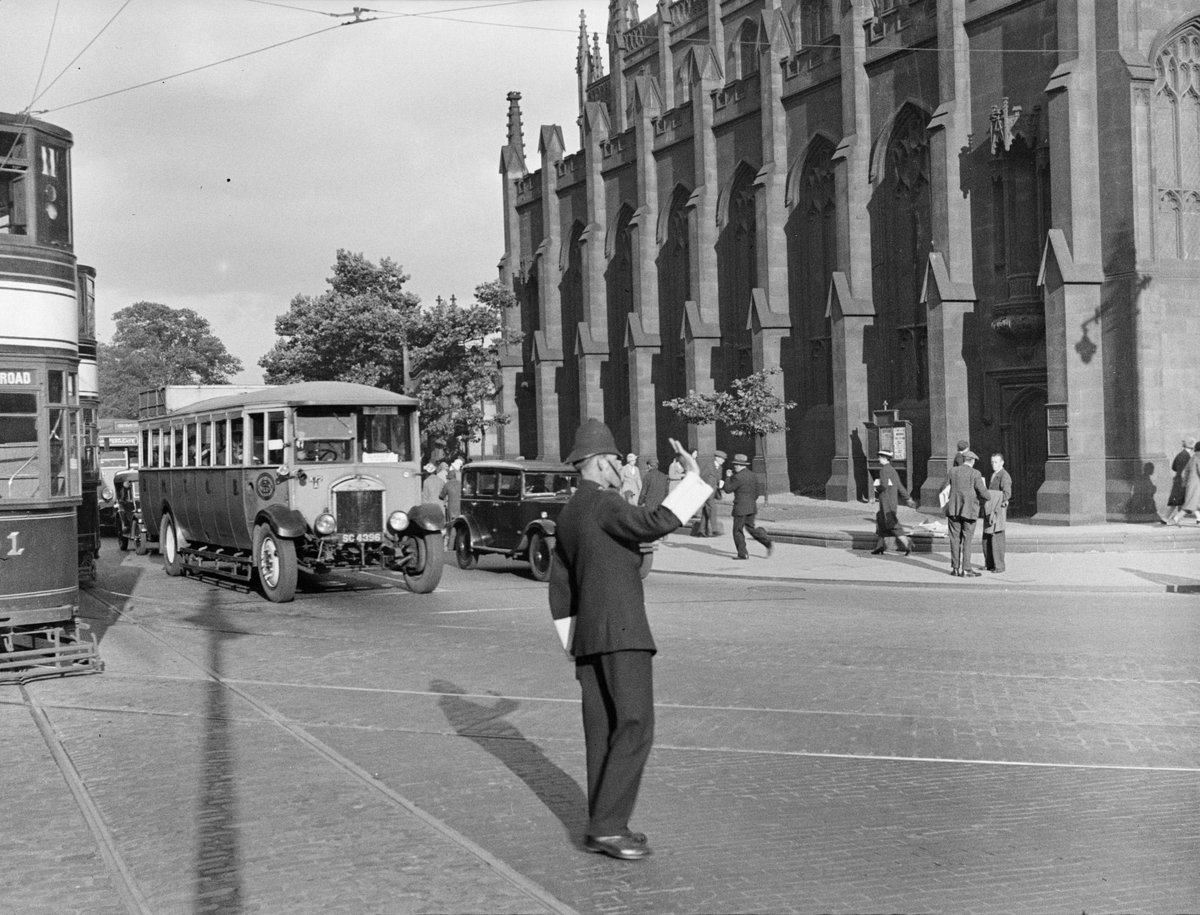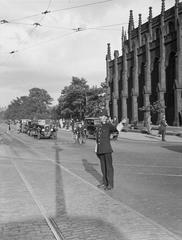
Church of St John the Evangelist Edinburgh: Visiting Hours, Tickets, and Historical Significance
Date: 15/06/2025
Introduction
Situated prominently at the west end of Princes Street, the Church of St John the Evangelist, known locally as St John’s, is a cornerstone of Edinburgh’s architectural and spiritual landscape. Since its foundation in the early 19th century, this iconic Episcopal church has been celebrated for its Gothic Revival design, rich liturgical tradition, and active role in community life. Designed by William Burn, St John’s features a striking Perpendicular Gothic style and houses some of Scotland’s finest Victorian stained glass. Today, St John’s continues to offer a unique blend of historical grandeur, cultural vibrancy, and inclusive hospitality, making it a must-visit Edinburgh historical site.
This guide provides a comprehensive overview of St John the Evangelist Edinburgh’s history, architectural highlights, visitor information—including visiting hours and ticket details—and its ongoing role in Edinburgh’s civic and spiritual life. For further details, consult the church’s official website and reputable tourism resources (Undiscovered Scotland; Edinburgh Architecture; Scotland’s Churches Trust; VisitScotland).
Table of Contents
- Origins and Foundation
- Architectural Significance
- Community and Spiritual Life
- Visitor Information
- Facilities and Nearby Attractions
- Unique Historical and Cultural Insights
- FAQs
- Conclusion and Call to Action
- References
Origins and Foundation
St John’s was established during a period of religious transformation in Scotland. Following the rise of presbyterianism in the Church of Scotland in 1582, the Scottish Episcopal Church emerged, facing centuries of political and social challenges (Undiscovered Scotland). Construction of the church began in 1816 on land that had been a council-owned market garden. The building was consecrated on Maundy Thursday, 19 March 1818, costing £18,000—an indication of its intended prominence in central Edinburgh (Undiscovered Scotland).
Architectural Significance
Exterior Features
St John’s is a prime example of the Perpendicular Gothic style, with its tall lancet windows, intricate tracery, and soaring verticality. Built of locally quarried sandstone, the church harmonizes with Edinburgh’s historic skyline (Edinburgh Architecture). The surrounding graveyard predates the church, serving as the final resting place for notable figures including artist Sir Henry Raeburn, physicist Prof. Peter Tait, and members of Sir Walter Scott’s family (Gazetteer for Scotland).
Interior and Fan-Vaulted Ceiling
Upon entering, visitors are greeted by a spacious nave and aisles, separated by slender columns and illuminated by natural light. The most remarkable feature is the fan-vaulted plaster ceiling, modeled after King Henry VII’s Chapel in Westminster Abbey and King’s College Chapel, Cambridge (Sacred Scotland). This ceiling, with its cobalt blue accents and ornate tracery, is a masterpiece of 19th-century craftsmanship.
The chancel, extended in 1882 by Peddie & Kinnear, and the south chapel, completed in 1935, integrate seamlessly with the original design. The black and white checkerboard marble floor and dark wood pews add to the church’s atmosphere of reverence (Edinburgh Architecture).
Stained Glass and Interior Artistry
St John’s is renowned for its exceptional Victorian stained glass collection, with windows by Ballantyne and Allan, Clayton & Bell, and Heaton, Butler & Bayne (Sacred Scotland). These windows depict biblical scenes and saints, filling the church with vibrant colored light. The 1901 organ by ‘Father’ Willis further enhances the church’s musical tradition.
Community and Spiritual Life
St John’s is an active Scottish Episcopal congregation known for inclusivity and social outreach (Scotland’s Churches Trust). The church offers a full schedule of worship, including Holy Communion, Sung Eucharist, Choral Matins, and Evensong. Community engagement extends to the Cornerstone Café, Cornerstone Bookshop, OneWorld Shop, and the Edinburgh Peace & Justice Centre. St John’s also collaborates with local organizations to support food banks and youth accommodation initiatives (St John’s Profile PDF).
The church is a cultural hub, hosting concerts, exhibitions, and having been a partner in the Just Festival, a celebration of social justice and the arts (St John’s Profile PDF).
Visitor Information
Visiting Hours
- Monday to Friday: 8:00 am – 4:15 pm
- Saturday: 9:00 am – 12:00 noon
- Sunday: Open after services
Always check the official website for the most current visiting hours.
Admission and Tickets
- Entry: Free of charge
- Donations: Welcome to support ongoing maintenance and community programs
- Guided Tours: Available by request; contact the church office in advance for booking
Accessibility
St John’s is committed to accessibility. The church offers level access to main areas, accessible toilets, and is listed on Euan’s Guide.
Practical Tips
- Photography: Permitted; please be respectful during services
- Best Time to Visit: Weekdays for a quiet atmosphere; August for festival events
- Pets: Dog-friendly
- Facilities: Café, bookshop, accessible toilets, and peaceful chapels for reflection
Facilities and Nearby Attractions
- Cornerstone Café & Bookshop: Affordable refreshments and a specialized book selection (Cornerstone Café)
- Peace & Justice Centre: Exhibitions and resources on peacebuilding
- Nearby Sites: Princes Street Gardens, Edinburgh Castle, National Gallery of Scotland—all within walking distance
Unique Historical and Cultural Insights
The Ethiopian Tabot
St John’s made headlines for returning an Ethiopian tabot (a sacred wooden altar tablet) to Addis Ababa in 2002, highlighting the church’s commitment to global heritage and interfaith respect (Returning Heritage).
Memorials and Graveyard
The tranquil graveyard features memorials to influential Edinburgh citizens, offering a reflective space amid the bustling city (Gazetteer for Scotland).
Frequently Asked Questions (FAQ)
Q: What are the visiting hours?
A: Monday to Friday, 8:00 am – 4:15 pm; Saturday, 9:00 am – 12:00 noon; Sundays after services. Check the official website for updates.
Q: Is there an entry fee?
A: No, admission is free; donations are welcome.
Q: Are guided tours available?
A: Yes, by prior arrangement—contact the church office.
Q: Is the church wheelchair accessible?
A: Yes, with level access and accessible toilets.
Q: Are pets allowed?
A: Yes, St John’s is dog-friendly.
Conclusion and Call to Action
St John the Evangelist Edinburgh is a testament to Scotland’s religious, architectural, and community heritage. With its awe-inspiring Gothic Revival design, vibrant stained glass, active worship, and commitment to inclusivity, St John’s invites visitors to explore, reflect, and participate. For the latest visiting hours, event updates, and resources, visit the official website and follow on Facebook and Twitter.
Enhance your visit by downloading the Audiala app for curated tours and guides on Edinburgh’s historical treasures.
References
- Undiscovered Scotland – St John’s Church
- Edinburgh Architecture – St John’s Church
- Scotland’s Churches Trust – St John the Evangelist
- VisitScotland – St John’s Church
- National Churches Trust – St John the Evangelist Edinburgh
- Gazetteer for Scotland – St John the Evangelist
- St John’s Profile PDF
- Euan’s Guide – St John the Evangelist Edinburgh
- Returning Heritage – Ethiopian Tabot



















































































